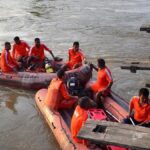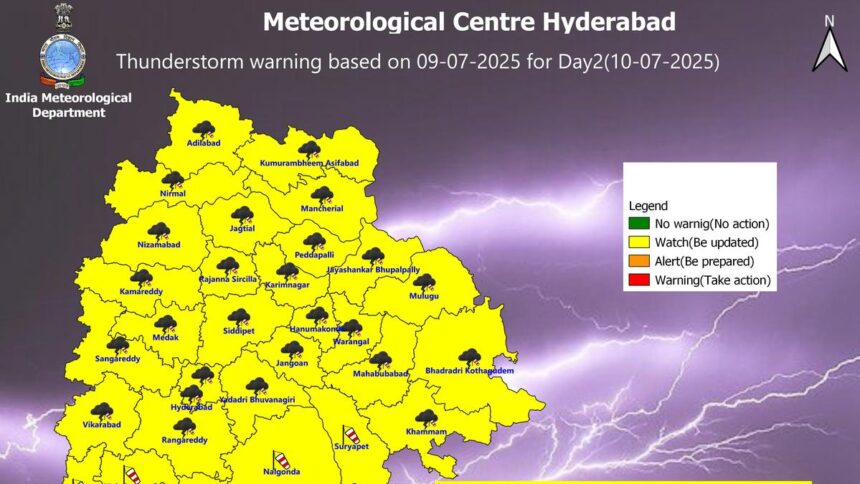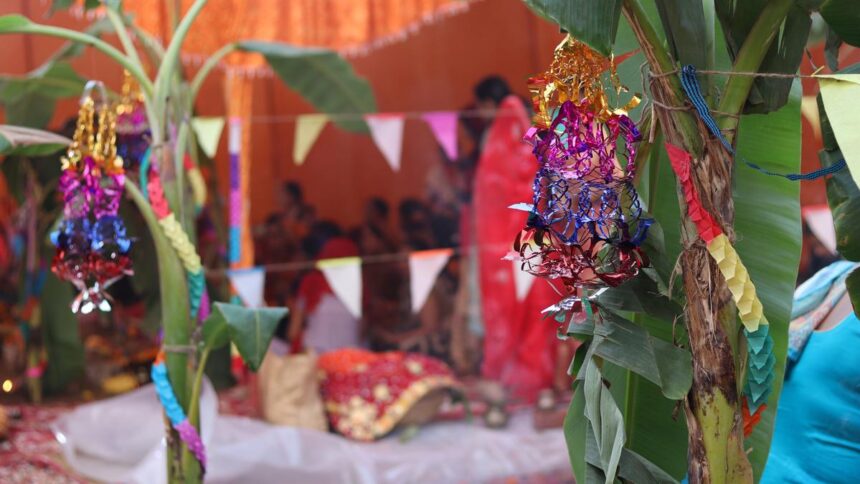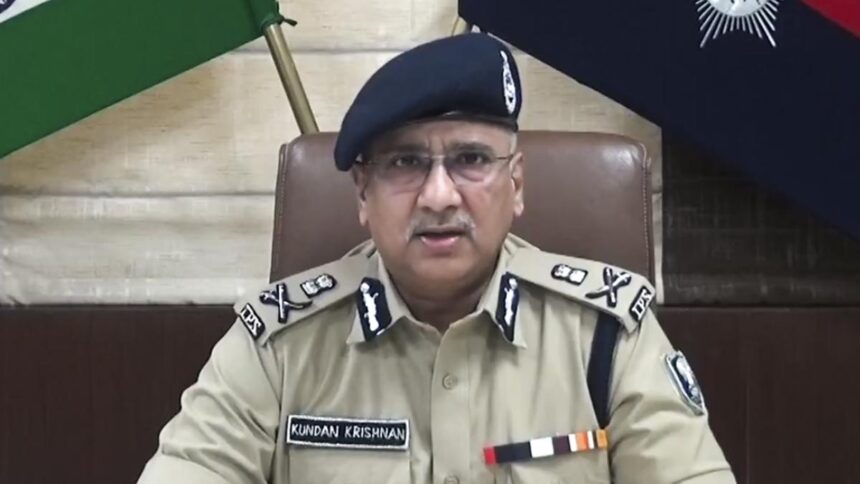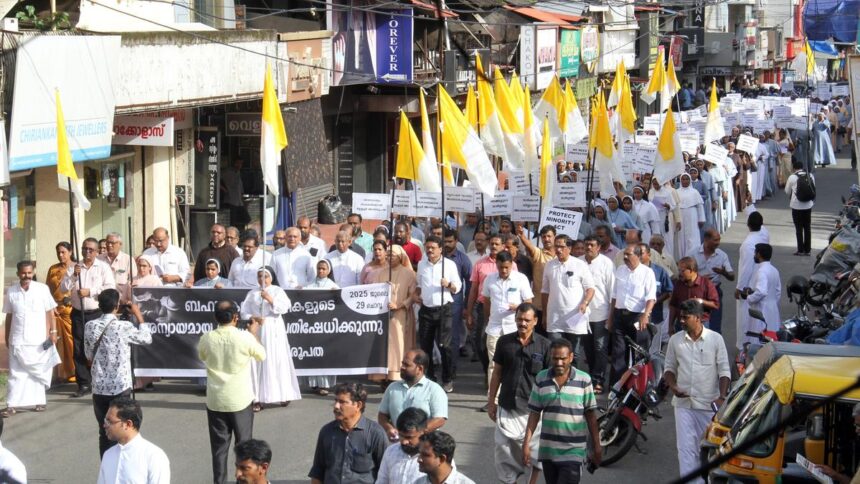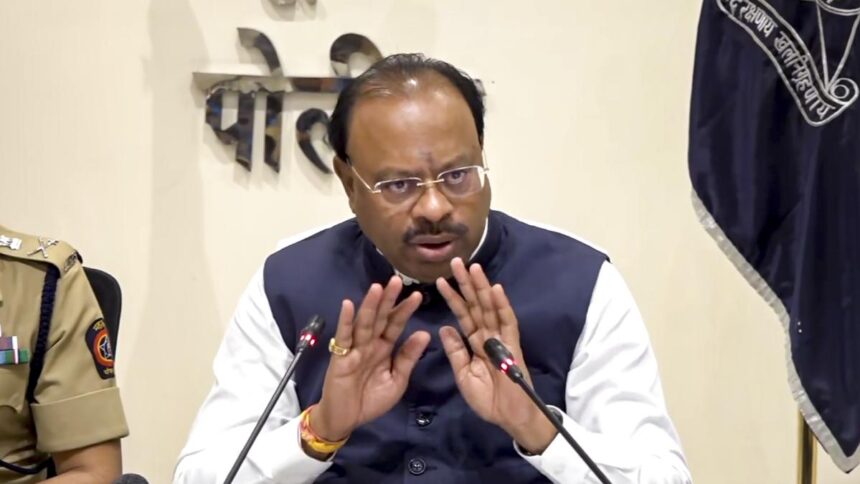Before August 5, 2025, when the first rays of the sun hit the houses of Dharali, a village situated 2,700 metres above sea level in the Himalayas, the sounds of conch shells and temple bells would fill the air.
Hundreds of pilgrims travelling to the Gangotri temple — one of the Char Dhams, among the most sacred pilgrimage circuits in northern India with four holy destinations — would stop at Dharali to rest, sip tea, and take in the breathtaking views of snow-capped mountains.

On the afternoon of August 5, 2025, a deluge of rain led to a landslide. The Kheer Gad stream, which flows through the village, swelled up with debris. Within seconds, the floodwaters swallowed the multi-storey hotels and homestays offering river views. A blanket of sludge, piled as high as 30-40 m, now covers the village, which had a population of less than 1,000 and also a high floating population of tourists. The rumbling noises of earth movers and the thud of spades striking the ground reverberate through the air. There is only devastation as far as the eye can see.
Since the tragedy hit Dharali, the Uttarakhand government has been able to recover only one body. Sixty-nine people remain missing, including nine Army personnel and 25 Nepali workers. Rescue teams have airlifted around 1,400 people by chopper from the flood-hit site. The government said in a statement that around 150 hotels and homestays, several other establishments, and apple orchards have been destroyed. The State government has formed a three-member team to rehabilitate the residents of Dharali, the latest site to be affected by rain, landslides, and floods in the fragile Himalayan region.
In pictures: Tumult in the Himalayas
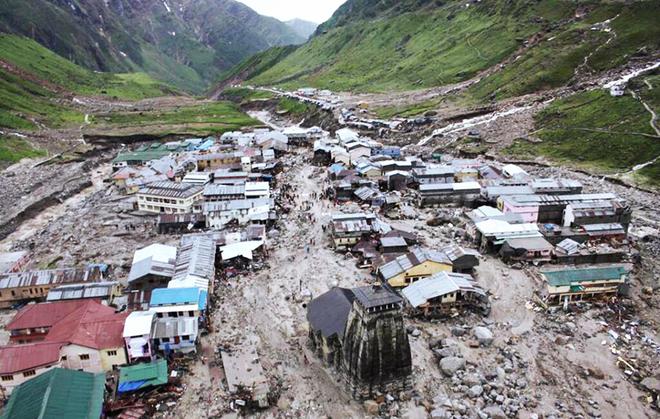
In this photograph taken on June 18, 2013, the Kedarnath Temple (centre, foreground) is pictured amid flood destruction in the holy Hindu town of Kedarnath, located in Rudraprayag district in the northern Uttarakhand.
Most roads on the way to Badrinath and Kedarnath have been washed away due to landslides in Uttarakhand on June 30, 2013.
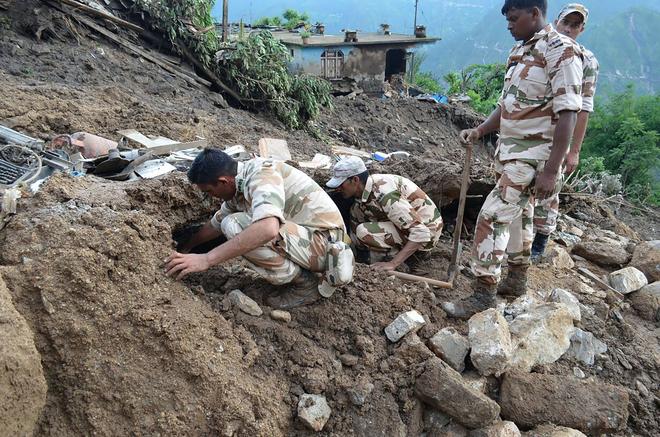
This handout photograph released on July 2, 2016 by the Indian Army shows soldiers searching for survivors of a landslide following torrential rains in Uttarakhand’s Pithoragarh area.
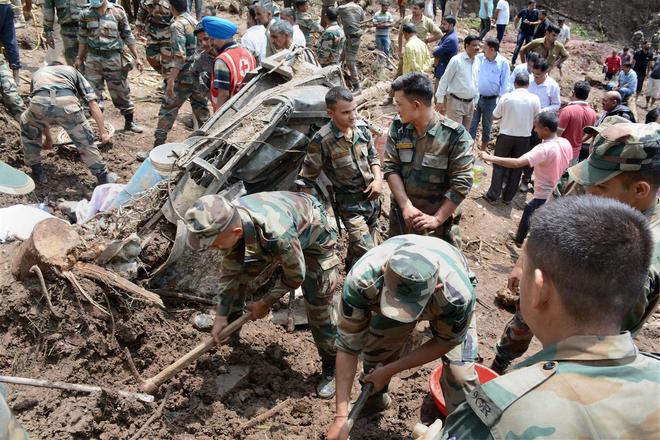
Rescue and relief work is under way after several vehicles, including two buses were swept away by a massive landslide at Kotrupi in Himachal Pradesh’s Mandi district on August 13, 2017.
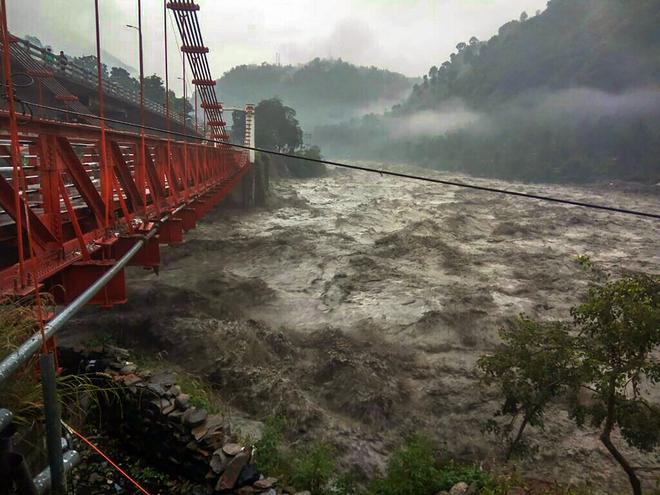
A damaged bridge is seen as a heavy gush of flood water flows into the Ravi in Himachal Pradesh’s Chamba on September 25, 2018.
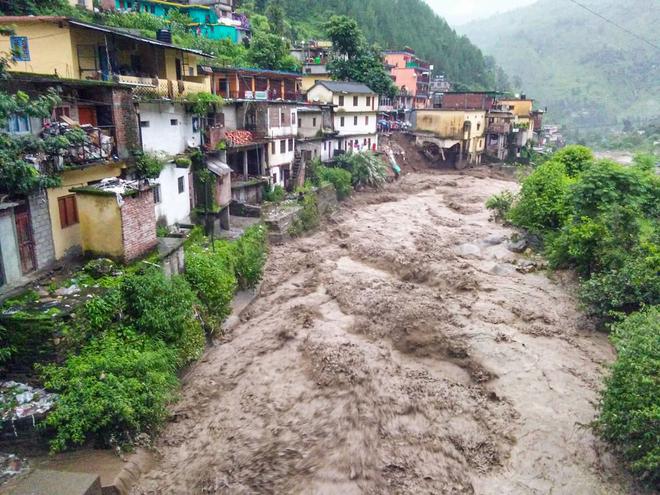
Flood water gushes down after a cloudburst in Uttarakhand’s Chamoli district on August 12, 2019.
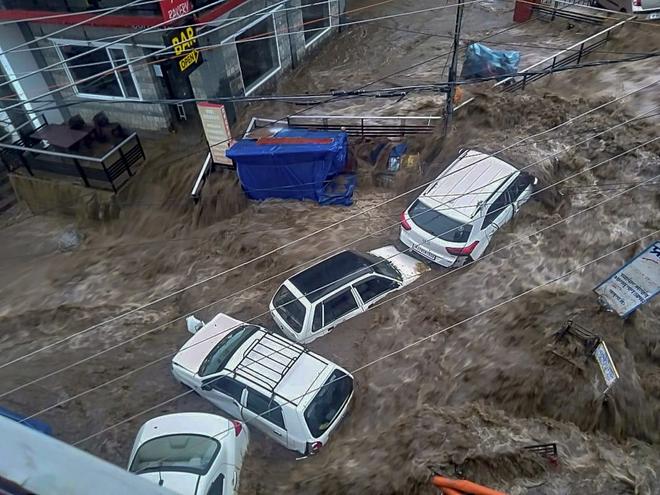
Cars are trapped in flood water due to heavy rain after a cloudburst at Mcleodganj near Dharamshala in Himachal Pradesh on July 12, 2021.
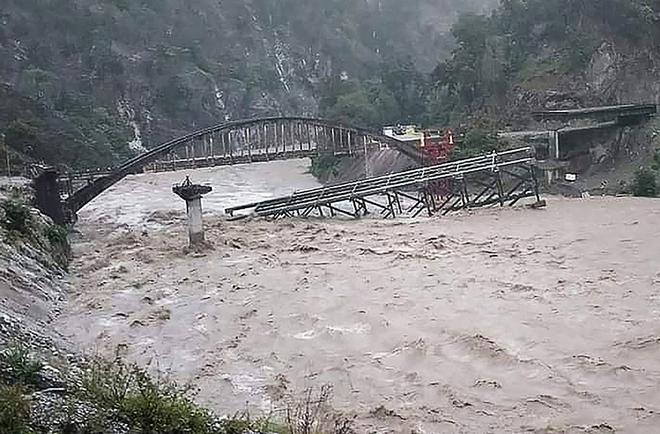
An under-construction bridge on a river along a national highway between Pithoragarh and Champawat at Chalthi in Uttarakhand collapsed on October 19, 2021 following heavy rains.
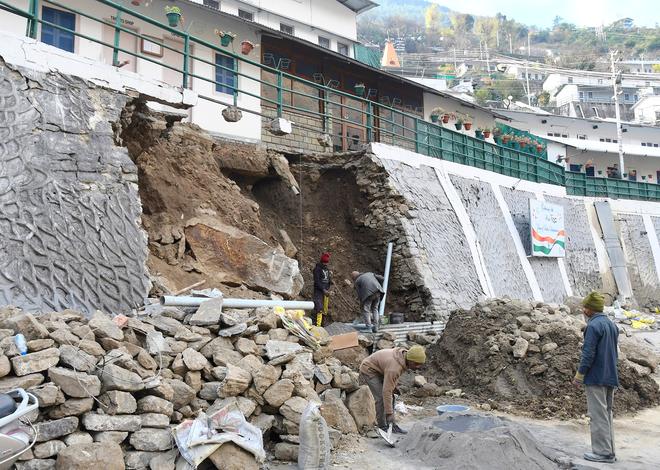
In this January 9, 2022 image, large cracks are seen on the walls and roads leading to Vishnupuram area in Uttarakhand’s Joshimath.
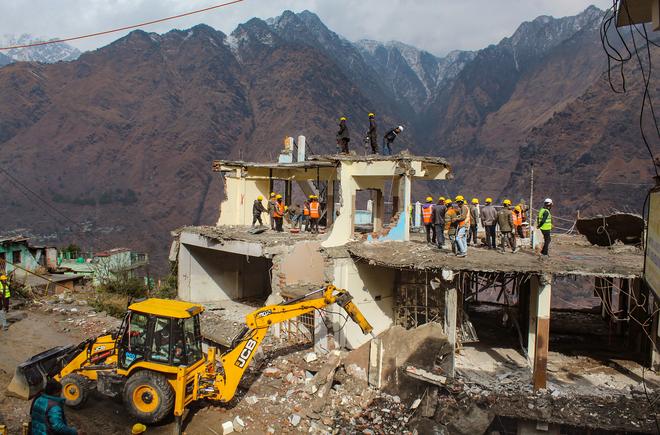
NDRF and SDRF personnel demolish a hotel that has been marked unsafe in the land subsidence-affected area in Uttarakhand’s Joshimath on January 25, 2023.
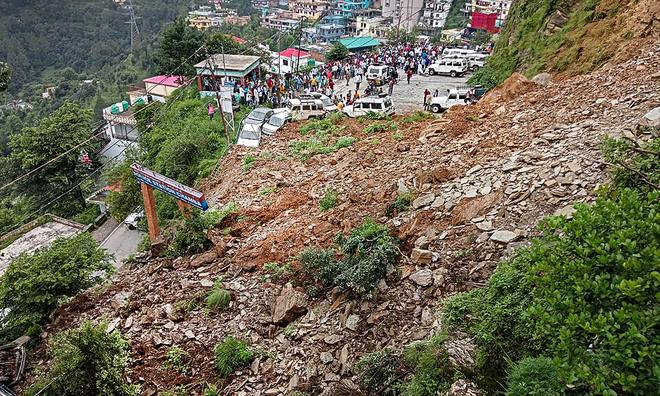
A road is damaged after a landslide at Chamba in Uttarakhand’s Tehri district on August 21, 2023.
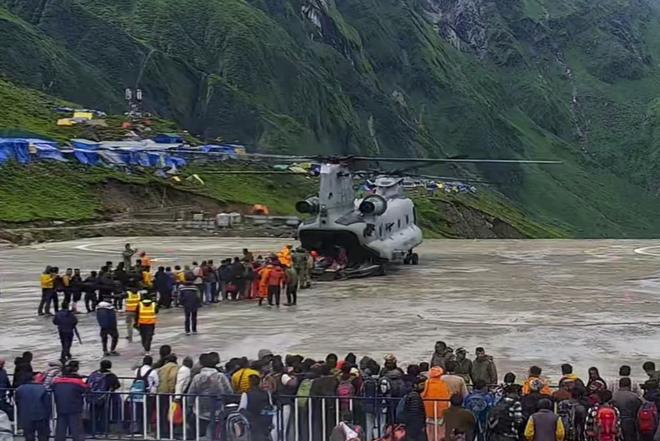
Stranded pilgrims board an IAF helicopter after they were rescued in landslide-hit Kedarnath on August 5, 2024.
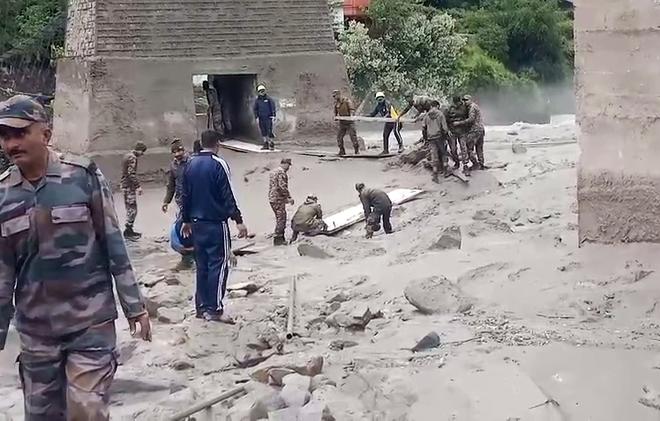
Relief and rescue operations are under way at Dharali in Uttarakhand’s Uttarkashi on August 6, 2025.
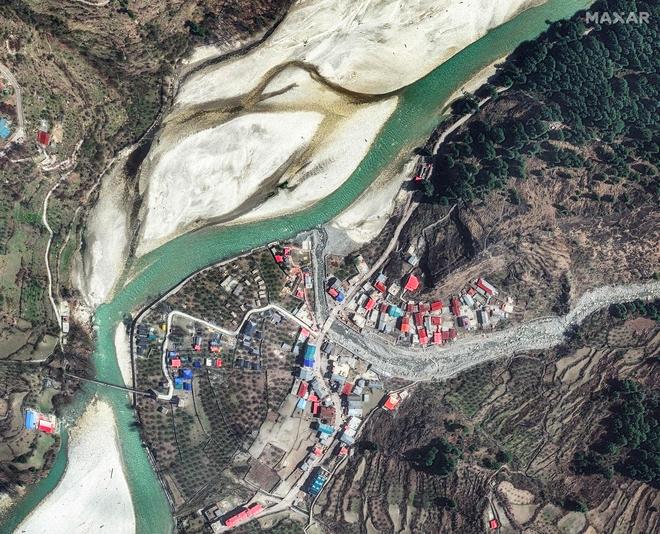
This handout satellite image provided by Maxar Technologies shows a general view of the town of Dharali almost four months before it was hit by floods.
A drone view of Border Roads Organisation (BRO) and State Disaster Response Force (SDRF) officials attempting to build a makeshift bridge to reach Dharali village after the bridge connecting it was swept away during landslides in Gangnani Uttarakhand.
1/3
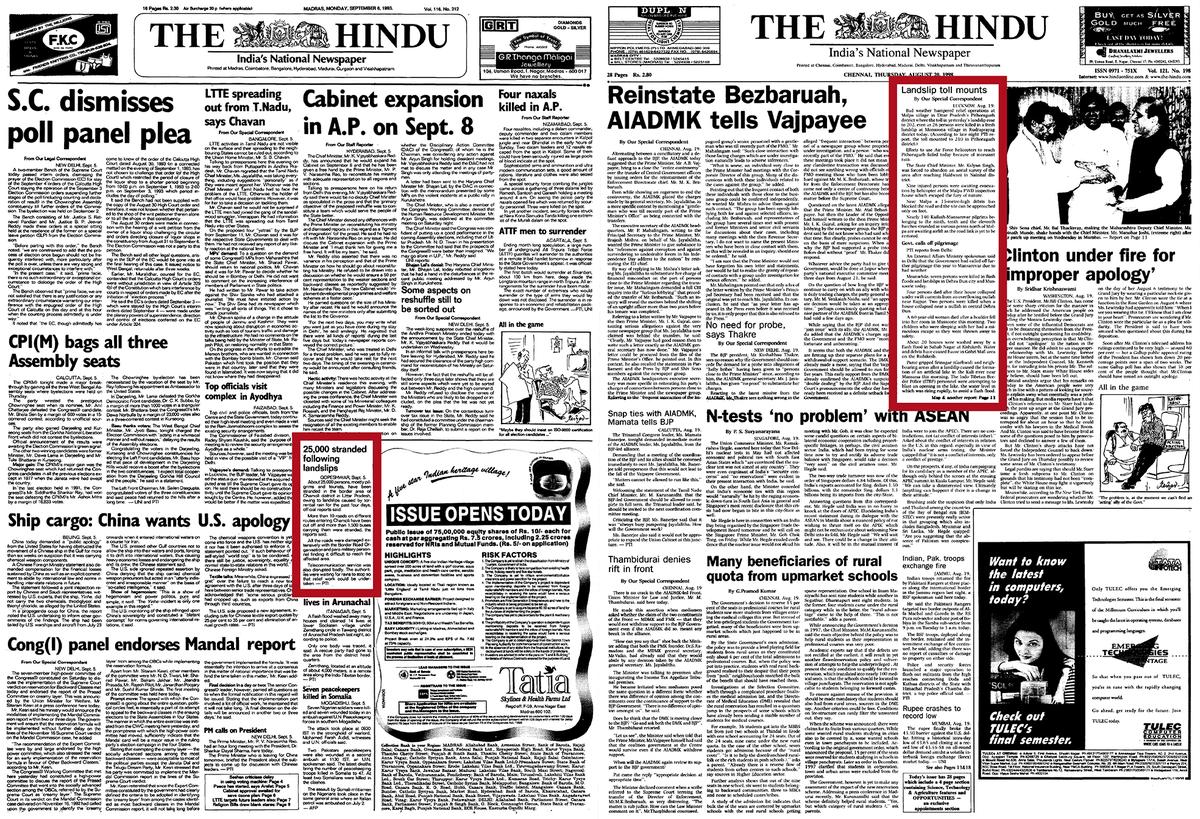
These archival images highlight the fragility of the Himalayan region.
Swept away
Rescue teams say it is next to impossible to retrieve the bodies buried under the mountains of sludge, but they nevertheless persist. A team of the State Disaster Response Force (SDRF) holds thermal imaging cameras, which detect body heat, and walks through what was once a three-storey hotel. After searching for several minutes, they conclude that there are no signs of life. They proceed to the next location.
Roads being repaired after the landslide.
| Photo Credit:
Shashi Shekar Kashyap
Lekhraj Singh’s heart sinks when the team moves on. A labourer from the Bijnore district of neighbouring Uttar Pradesh, Lekhraj had come to Dharali to find his son, Yogesh, who had been working at a construction site in the village since May. “My wife and daughters have stopped eating since they heard of the disaster. Yogesh’s phone is silent and he has been untraceable since then. I want my son back,” Lekhraj says.

Pressing his palms together in prayer and looking at the mountains, he shouts as loud as he can: “Yogesh, are you there?”
Officials ask him to sit in a chopper so that he can be dropped at Uttarkashi town, about 70 kilometres away. Tears stream down Lekhraj’s cheeks. “Bhala ho sarkar ka jo hume do din se roz yaha laati hai helicopter me taki hum apne bacche ko khoj sakein (I am grateful to the government for bringing me for the last two days by chopper here so I can look for my son),” Lekhraj says, as he picks up a mud-covered jute bag carrying two sets of clothes, warmers, and a postcard-sized picture of his son.
Kali Devi, a construction worker, had gone to the market when the floodwaters hit Dharali. She says her son had dialled her husband when the disaster hit the village. In a video that went viral on social media, a dazed Kali says, “All he could say is that he won’t survive. Since then, his phone is not reachable.” She has been running from pillar to post to find her husband, her three sons, daughter-in-law, and two grandchildren.
Some people have lost their kin and some have lost their land in the tragedy, but Jai Bhagwan Panwar has lost nearly everything he had. The waters swept away his nephew, Akash Panwar, in front of his eyes. His two-storey hotel is nowhere to be seen. His apple orchards have been washed away.
Jai was attending an annual fair, the Hardu Mela, organised for the Hindu god Someshwar, on the outskirts of the village, when he heard the thundering noise of the waters from the Kheer Gad crashing into the village.
“The priest was all set to perform the aarti when we heard the noise. People started running and shouting for help. I made frantic calls to my nephew and to workers at my hotel, but I couldn’t reach anyone. A girl from Rajasthan was the only guest at my hotel at that moment. She is also missing along with the others,” he says. Jai performed the last rites of Akash at his house in Uttarkhasi’s Barethi village.
Sanjay Panwar lost his entire life’s savings in the floods. He has no idea how is going to repay a loan that he had borrowed from a bank to open an apple drying plant.
“It would have been better if I had died,” Sanjay says. “At least my family would have got some compensation from the government to start life afresh.”
Living in trauma
Villagers say that the floodwaters hit the village again and again, from 1:45 p.m. to 5 p.m., leaving them traumatised. People with complaints of anxiety and sleeplessness have started making a beeline for the temporary health check-up posts that have been set up by the government.
Also Read : Uttarkashi floods: Uttarakhand CM Dhami announces ₹5 lakh immediate assistance for victims
“The locals say whenever they close their eyes, they feel they are drowning. The trauma is not letting them rest,” says Dr. Meghna Aswal, who was on duty at a health post till August 12.
A pregnant woman who was rescued from Dharali village being checked by doctors inside an ambulance at the Matli helipad in Uttarkashi.
| Photo Credit:
Shashi Shekar Kashyap
Dr. Aswal found that several pregnant women were depressed thinking of delivery and childcare in the village. She prepared a list of 12 women whose delivery dates were approaching. The women were airlifted to Uttarkashi.
Among them is Radhika Sai, 21, from Nepal, who is nine months pregnant. Radhika worked at an apple orchard in Dharali with her husband Gopal Sai. On the day of the tragedy, she was sitting in her room somewhere up in the hills.
Radhika had planned to go to Nepal for her delivery, but she is now in Uttarkashi with no female family member around. She has developed a skin infection due the dampness. With no undergarments left, Radhika has tied a red stole around her body to support her heavy breasts. She walks around in a daze and with a limp. Her husband Gopal, who is left with only a few hundred rupees, is struggling to find a way to earn some money to afford childcare.
Back to square one
The water in the Kheer Gad stream has not just destroyed Dharali, but also the Army camp in Harshil, another Himalayan village next to it. Officials say the continuous and heavy water flow from Kheer Gad has led to the formation of an artificial lake in Harshil.
Arpan Yaduvanshi, chief of the Uttarakhand SDRF, says 120 Army personnel are working day and night to rescue people at Dharali along with 100 personnel from the National Disaster Response Force, 75 from the SDRF, and 70 from the Indo Tibetan Border Police (ITBP). The rescue teams, who have divided the spot into three zones, have deployed tools such as ground penetrating radars, victim locating cameras, and thermal imaging cameras to locate survivors. Dog squads, engineering and medical staff, and scientists and geologists are also at the spot.

Arpan says the biggest challenge in the rescue operation is the water. “It continues to flow beneath the debris. This poses serious risks for the rescue teams. This is also one of the reasons why we are unable to use heavy digging and excavation machines at the spot — their vibrations are too high to be used in this fragile area.”
Weather changes have also added to their woes. “Every day, we work for several hours to clear the sludge. Then it rains and everything goes back to being what it was. We keep coming back to square one,” explains Arpan. The rains are also hampering helicopter services, leaving the rescue teams with scanty petrol, ration, and equipment for digging, he adds.
The rescue teams are not just struggling in Dharali, but also across the hill in Uttarkashi. Incidents of landslides, and roads getting washed away due to incessant rains, are being reported from multiple spots every day since August 5.
A bridge connecting Dharali and Mukhba, another neighbouring village, has been declared unfit for use by the Army. As a landslide washed away a major portion of the road that connects Gangnani village to Dharali, people now have to trek 12-15 km to reach Dharali by road. Another landslide near Dabrani village halted vehicular movement from Uttarkashi for hours. During road construction near Dharali, an excavator toppled into the river with its driver inside. The driver remains missing.

Amid the strenuous rescue efforts, helicopter pilots make multiple sorties every day, to pick up and drop people from Dharali to the Matli and Chilyanisaur helipads. There are 17 choppers involved in rescue efforts in the region at the moment — five from the Indian Air Force, nine from the Uttarakhand Civil Aviation Development Authority, and three from the Army.
At the Matli village helipad, every time a chopper lands, SDRF and ITBP personnel, along with doctors, rush towards it to ensure that those disembarking are fine. The helicopters are filled with rations, bedding, and other essentials, which are distributed across the villages surrounding Dharali. The choppers also airlift critical and injured people to higher centres in Rishikesh and Dehradun.
The built-up area
Environmentalists believe that ‘extremely heavy rains’ up in the hills caused a landslide and flooding from the Kheer Gad. In their letter to the Environment Ministry after the Dharali disaster, Navin Juyal, a geologist, and Hemant Dhyani, convenor of the Ganga Ahwan Movement, wrote that there has been an influx of tourists in the upper Ganga catchment in recent years. To meet this demand, people have been constructing new hotels and home stays in the hills in defiance of all rules, they said. Both Navin and Hemant served as members of the expert body appointed by the Supreme Court after the 2013 Kedarnath disaster as well as the 2019 High-Powered Committee on the Char Dham road widening project.
Past tense
Uttarakhand’s biggest natural disasters since the State’s formation in 2000
June 2013: A cloudburst led to flash floods at Kedarnath, claiming over 5,000 lives. It left the valley ravaged, and took almost a decade for restoration.
February 2021: An ice-rock avalanche occurred in the Tapovan area of Chamoli, resulting in a flood, claiming over 200 lives and destroying a hydropower project.
October 2022: An avalanche at the Draupadi Ka Danda peak in Garhwal killed 27 experienced mountaineers from the Nehru Institute of Mountaineering, Uttarkashi.
“Dharali and similar settlements along the Gangotri highway are built on the debris flow or alluvial fan deposit. In the upper reaches, say above 2,500 metres, the streams are fed by the cirque glaciers or ice packs and tend to carry large volume of paraglacial and landslide generated sediments,” they stated.
The two of them claimed that the disaster which struck the village was inevitable. During the Kedarnath disaster in June 2013 too, Dharali had undergone significant damage due to the sediments mobilised by the Kheer Gad, they said. Even after the 2013 disaster, people were not discouraged from going to locations near the stream. A reinforced cement concrete wall was constructed to prevent flood debris from entering the settlement. This encouraged people to build resorts and hotels next to the stream, which explained the extent of the damage, they wrote.
Landslides continued intermittently even a week after the Dharali tragedy on August 5, hampering relief work.
| Photo Credit:
Shashi Shekar Kashyap
Brijesh Sati, general secretary of the Uttarakhand Teerthpurohit Mahapanchyat, a body of priests of the Char Dham temples, believes that lives were saved because villagers had gathered at the Hardu Mela. “The aarti was being performed at the Mela site, so most of the villagers had come there. Had this been a normal day, the loss of lives would have been much higher,” he says.

The debris that flowed into the village, which was surrounded by apple orchards, pine trees and mountains, also flattened the oldest monument, the Kalp Kedar temple. According to Hindu mythology, the temple, dedicated to Lord Shiva, was built by the Pandavas during their exile. The story goes that Lord Shiva had refused to absolve the Pandavas of their indiscretions.
Brijesh believes that the Kalp Kedar is now back to its original form. He says, “It is said that the Shivling (a symbolic representation of Lord Shiva, often depicted as a smooth, cylindrical stone with a rounded top) in this temple has been hidden beneath the ground for generations. It has never been fully seen. Several excavations were been done at this site, but the Shivling has always remained partially hidden. After the floods, Lord Shiva has again gone beneath the ground. Even the meaning of Kedar is sludge.”
Nandan Bisht, a hotelier in Uttarkashi, says about the river, “When rivers decide to claim their course, everything that comes in their way witnesses a similar fate.”



